Celebrating Ada Lovelace’s Vision
From navigating us home to calculating pi to as many digits as possible, computers can be programmed to do many things we take for granted. It is sometimes difficult to pinpoint the exact moment that computers were invented or the one person whose creativity sparked their invention. Nineteenth-century mathematician Ada Lovelace, however, is recognized as a visionary who imagined how they might be programmed to perform those functions essential to modern life. This installment of A Grade Ahead’s series on the history of math and science celebrates Ada’s vision.
Early Childhood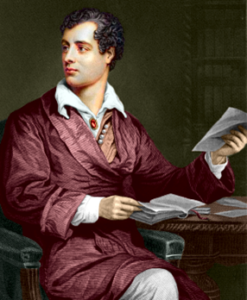
Ada Lovelace was born in London in 1815. Her famous father, Lord Byron, was a celebrated poet who left the country shortly after her birth. Her mother, Annabella Milbanke Byron, did not want her daughter to become a poet and insisted on educating her daughter to be more logical than creative. So, Ada had tutors in science and math, which was unusual for women in the early 1800s. Her creativity, however, could not be suppressed by her mother’s educational regimen. She once said, “If you can’t give me poetry at least give me poetical science.” Like Ada, A Grade Ahead sees the value in teaching students to communicate creatively in our enrichment classes. Learn more about our English curriculum here.
Creativity and Curiosity
Ada was frequently ill as a child as well as isolated from other children. Her tutors were her companions, so much of Ada’s life revolved around what she was learning from her studies as well as what she could observe about the world.
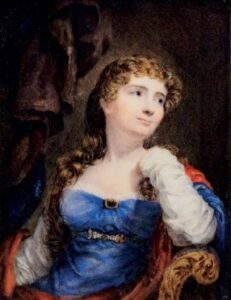 She demonstrated that curiosity about the natural world at a young age. For example, she studied the ways in which birds fly. Like so many scientists and engineers, she began to think about the practical applications of that knowledge. She used what she learned about how birds fly to develop plans for an invention that would allow humans to fly. That was an early indication of the ways in which her creativity and curiosity would later enable her to envision how math could change the world.
She demonstrated that curiosity about the natural world at a young age. For example, she studied the ways in which birds fly. Like so many scientists and engineers, she began to think about the practical applications of that knowledge. She used what she learned about how birds fly to develop plans for an invention that would allow humans to fly. That was an early indication of the ways in which her creativity and curiosity would later enable her to envision how math could change the world.
A Grade Ahead’s science curriculum encourages students to be curious about the world around them, just like Ada. Learn more here!
Math and Marriage
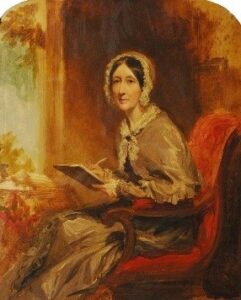 In 1833, at age 17, Ada’s mother brought her to London to present her to the British king and queen at Court. This presentation signified that she, like so many other young women of her rank, was ready to marry. In the 1800s, women were expected to marry advantageously. Women had few legal, political, or economic rights, so marriage was considered essential.
In 1833, at age 17, Ada’s mother brought her to London to present her to the British king and queen at Court. This presentation signified that she, like so many other young women of her rank, was ready to marry. In the 1800s, women were expected to marry advantageously. Women had few legal, political, or economic rights, so marriage was considered essential.
Ada, however, was less interested in finding a husband than she was in math. She continued her studies even as she attended balls. As a result of her interests, her friend Mary Somerville introduced her to polymath Charles Babbage. He was intrigued and impressed by Ada’s abilities, and he quickly became a friend and mentor, encouraging Ada to continue to explore math. Indeed, Charles was the first to call Ada the “Enchantress of Numbers.”
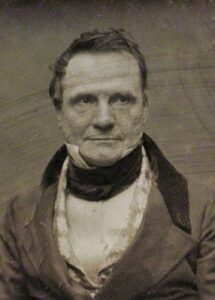 By 1833, when they met, Charles Babbage had already invented a machine that completed more than just simple calculations. Called the “Difference Engine,” this machine was on the cutting edge of nineteenth-century technology. It could complete complex calculations using the numbers 0-9 and was programmed by punch cards. Punch cards were already being used by the Jacquard Loom to weave patterns into cloth. Charles thought that the punch cards could also tell his Difference Engine which calculations it should perform. His invention could also store the information just as a modern computer does.
By 1833, when they met, Charles Babbage had already invented a machine that completed more than just simple calculations. Called the “Difference Engine,” this machine was on the cutting edge of nineteenth-century technology. It could complete complex calculations using the numbers 0-9 and was programmed by punch cards. Punch cards were already being used by the Jacquard Loom to weave patterns into cloth. Charles thought that the punch cards could also tell his Difference Engine which calculations it should perform. His invention could also store the information just as a modern computer does.
Lovelace & Lovelace
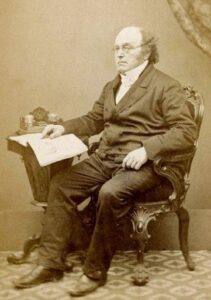 In 1835, Ada married Lord William King, who became the Earl of Lovelace in 1838. Ada, then, became the Countess of Lovelace, which is why she is known to us as Ada Lovelace. Together, William and Ada had three children.
In 1835, Ada married Lord William King, who became the Earl of Lovelace in 1838. Ada, then, became the Countess of Lovelace, which is why she is known to us as Ada Lovelace. Together, William and Ada had three children.
It was a love match as well as a marriage of convenience for both Ada and William. William may not have been her intellectual equal, but he supported her intellectual pursuits and encouraged her to continue to challenge herself. He hired renowned mathematician Augustus De Morgan to tutor Ada. Under his instruction, Ada explored advanced calculus and more specifically Bernoulli’s numbers, a mathematical concept that later became a part of Ada’s suggested functions of computers. Here we see how Ada continued to study math and challenge herself throughout her adult life.
Is your student looking for a challenge? A Grade Ahead’s math curriculum represents a wonderful opportunity to not only challenge your student from prekindergarten through high school but also encourage them to develop lifelong curiosity about math!
Ada and the Analytical Engine
In 1833, about the time Charles and Ada met, Charles Babbage proposed an “Analytical Engine,” which he was never able to construct. Previous inventions could complete basic operations, like addition, subtraction, and even multiplication and division. Charles’ proposed new machine, however, would not only perform any calculation but also modify its own calculations while it was still running. In other words, it could potentially think about what it was doing. This ability to change its calculations was a first step towards computers as we know them. It was Ada Lovelace rather Charles Babbage, however, who truly understood the potential applications of the Analytical Engine.
In 1843, Luigi Federico Menabrea, an Italian mathematician and engineer, wrote an article in French that simply described the Analytical Engine and its history. Charles asked Ada to translate Menabrea’s article into English. Ada added her comments to the article as well as translated it. These notes proved to be more influential in the long term than the Menabrea’s original article.
In her annotations, Ada theorized that the Analytical Engine could be programmed to do more than mathematical calculations. She suggested that future machines could be programmed by giving them a set of instructions in symbols as well as digits. They could then manipulate the symbols, which would allow them to compute rather than simply calculate. In her perspective, this ability to program the Analytical Engine and similar machines opened up infinite possibilities for the future. Her vision of the uses of what became known as computers and how they could be programmed influenced the evolution of computer programming in general. Therefore, although discounted at the time because she was a woman, later computer scientists put her ideas into practice. Eventually, twentieth-century programmers invented a language they called “Ada” in her honor.
Lovelace’s Legacy
Ada Lovelace died in London in 1852 after a long illness. She left behind her husband, three children, and her vision of the future of computers.
Although Ada’s primary legacy is her vision of how computers can be programmed to do all sorts of essential things, she is also a role model for young women. She especially inspires women interested in math and science to explore what might be possible in the future.
A Grade Ahead can help your student follow in Ada Lovelace’s footsteps! Our curriculum will not only spark a love for math and science but will also encourage creativity and the ability to imagine what might be possible. Call or visit an A Grade Ahead Academy near you, request a free curriculum sample, or take a free assessment and get started today!
What do you envision for the future? Do you have academic figures from history who inspire you? Tell us all about it in the comments!
Summer is here! See if an A Grade Ahead near you is offering Mathventure Jr., Mathventure, or one of our other Enrichment Camps in your area! For more information, check out this blog post.
Author: Susanna Robbins, Teacher and Franchise Assistant at A Grade Ahead
